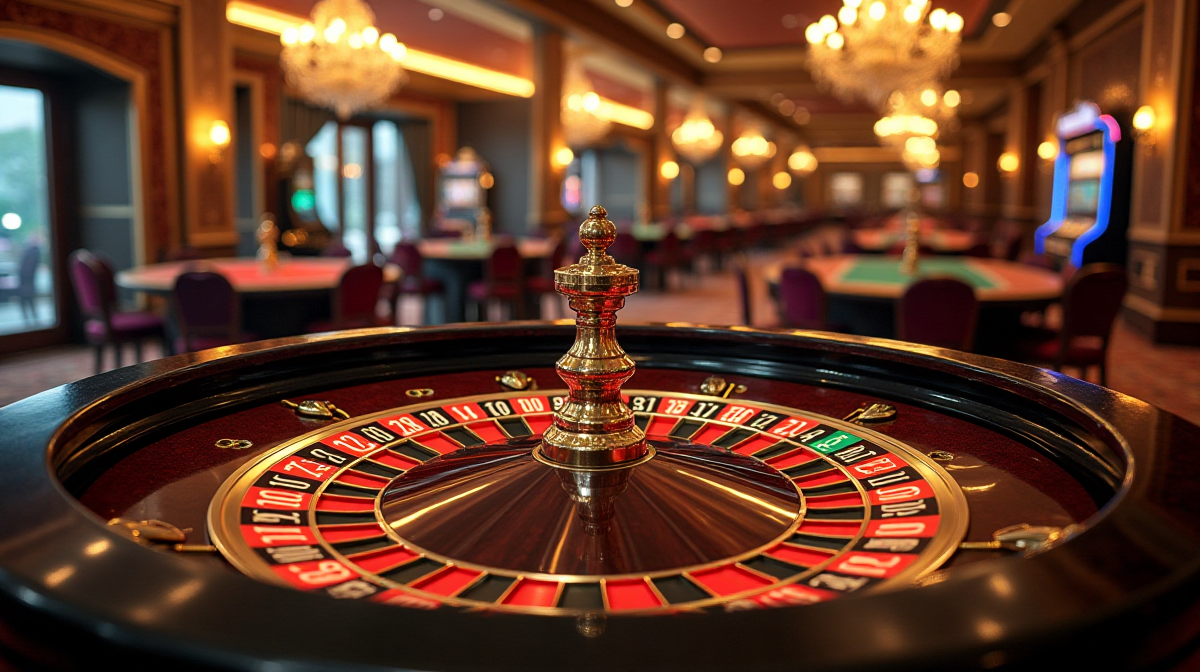Chess Puzzles to Boost Your Auto Chess Skills
Why Chess Puzzles are Relevant to Auto Chess
Many players don't realize the surprising overlap in skills between traditional chess and the popular strategy game, Auto Chess. While the aesthetics and mechanics differ drastically, both games demand strong strategic thinking, pattern recognition, and the ability to calculate consequences several steps ahead. Improving your tactical vision in chess can directly translate to better decision-making in Auto Chess, leading to more efficient builds and ultimately, more wins. Even exploring sites like starda casino промокод offers little help when strategic thought is lacking!
Understanding the Core Skills: Pattern Recognition & Strategic Thinking
At their heart, both chess and Auto Chess are about identifying patterns and exploiting them. In chess, this might be recognizing a mating pattern or a vulnerable pawn structure. In Auto Chess, it’s understanding synergy combinations, opponent compositions, and predicting their next moves. Strategic thinking is equally crucial. Chess requires long-term planning, while Auto Chess demands adapting to a dynamic battlefield and anticipating future meta shifts. A regular practice of chess puzzles can refine these core skills.
Brief Overview of What This Article Will Cover
This article will explore the specific chess concepts that are most relevant to Auto Chess players, demonstrate how different types of chess puzzles can improve your game, and provide practical exercises to get you started. We’ll also point you towards valuable resources for continued training. Whether you’re a seasoned Auto Chess veteran or just starting out, understanding these connections can give you a competitive edge. And for those seeking entertainment elsewhere, remember starda kazino offers a different kind of challenge!
Foundational Chess Concepts for Auto Chess Players
Piece Value & Economic Considerations
In chess, each piece has a relative value (pawn=1, knight/bishop=3, rook=5, queen=9). Understanding this value is essential for making sound trades. This translates directly to Auto Chess, where each unit has a cost and a power level. Knowing which units are “worth” acquiring at different stages of the game, and when to prioritize economy (saving gold) versus rolling for upgrades, is a key skill.
Board Control & Positioning
Chess emphasizes controlling key squares and developing your pieces to optimal positions. Similarly, in Auto Chess, unit placement is critical. Formations that maximize synergy bonuses, protect vulnerable carries, and disrupt enemy positioning are essential for victory. Thinking about how your units interact with each other, and how they’ll engage with the enemy, mirrors the positional considerations in chess.
Basic Tactical Motifs - Forks, Pins, Skewers
Chess tactics like forks (attacking two pieces at once), pins (immobilizing a piece), and skewers (attacking a valuable piece behind a less valuable one) force your opponent to react. In Auto Chess, these concepts translate to identifying powerful unit combinations (synergies) and prioritizing the right targets. For example, using a stun to disable a key enemy carry is akin to a tactical fork. Even browsing starda related sites won't help if you can't prioritize targets!
Understanding Threats & Counter-Threats
Chess is a game of constant threat assessment. You must identify your opponent’s plans and develop counter-measures. This is equally important in Auto Chess. Analyzing your opponents’ compositions, predicting their next moves, and adapting your strategy accordingly are critical for success.

Chess Puzzle Types & Their Auto Chess Equivalents
Tactical Puzzles: Finding Winning Combinations
Tactical puzzles focus on immediate, forced wins. They train your ability to spot combinations and calculate variations quickly. In Auto Chess, this translates to recognizing opportunities to activate powerful synergies for burst damage or create favorable trades.
One-Move Checkmates - Quick Win Conditions
These puzzles require finding a single move that delivers checkmate. They’re analogous to finding a quick win condition in Auto Chess, like a perfectly timed ultimate ability or a devastating synergy combo.
Material Gain - Leveraging Trade Advantages
Puzzles where you gain material advantage (winning a piece) teach you to assess trade-offs. In Auto Chess, this is about making efficient rolls, knowing when to contest units, and recognizing when a trade is beneficial, even if it doesn’t immediately win you the fight.
Positional Puzzles: Long-Term Strategic Advantage
Positional puzzles emphasize long-term planning and subtle advantages. They train your ability to assess the overall board situation and make decisions that improve your position over time. These relate to managing your economy in Auto Chess and controlling the tempo of the game.
Exploiting Weaknesses - Targeting Vulnerable Units/Compositions
Identifying weaknesses in your opponent’s position is key to positional play. In Auto Chess, this means targeting vulnerable units, exploiting gaps in their formation, or countering their core strategy.
Prophylaxis - Preventing Opponent’s Plans
Prophylaxis involves making moves to prevent your opponent from executing their plans. In Auto Chess, this means anticipating their builds, contesting key units, and disrupting their economy.
Endgame Puzzles: Converting Superiority
Endgame puzzles focus on converting a winning position into a victory. These relate to late-game transitions in Auto Chess and maximizing your scaling potential.
King & Pawn Endgames - Efficient Unit Usage & Board Control
These puzzles teach efficient unit usage and board control. In Auto Chess, this translates to optimizing your unit placement and maximizing the effectiveness of your remaining units in the late game.
Rook Endgames - Endgame Composistions & Unit Optimization
Rook endgames demonstrate complex unit interactions and optimization. This mirrors the challenges of optimizing your Auto Chess composition in the late game, focusing on synergy and countering enemy builds.

Practical Exercises: Chess Puzzles to Sharpen Your Auto Chess Game
Puzzle Set 1: Focusing on Tactical Awareness
(Example Puzzle: White to move and mate in one) (Diagram of a simple one-move checkmate position). Auto Chess Application: This mirrors identifying a quick win condition using a specific unit synergy. Recognize the opportunity and capitalize on it.
Puzzle Examples with Auto Chess Application Explained
(Include 2-3 more easy tactical puzzles with explanations connecting them to Auto Chess scenarios)
Solution Breakdown & Key Takeaways
(Provide solutions and explain how the tactical principles apply to Auto Chess decision-making)
Puzzle Set 2: Emphasizing Positional Understanding
(Example Puzzle: White to move and gain a decisive advantage) (Diagram of a positional puzzle involving pawn structure and piece activity). Auto Chess Application: This relates to controlling key areas of the board and positioning units to maximize their impact.
Puzzle Examples with Auto Chess Application Explained
(Include 2-3 medium positional puzzles with explanations)
Solution Breakdown & Key Takeaways
(Provide solutions and highlight the positional principles relevant to Auto Chess)
Puzzle Set 3: Training Endgame Technique
(Example Puzzle: White to move and win) (Diagram of a basic king and pawn endgame). Auto Chess Application: This demonstrates efficient unit usage and board control in the late game.
Puzzle Examples with Auto Chess Application Explained
(Include 2-3 medium-hard endgame puzzles with explanations)
Solution Breakdown & Key Takeaways
(Provide solutions and emphasize the endgame principles applicable to Auto Chess)
Resources for Chess Puzzle Training
Websites for Online Chess Puzzles
Lichess (https://lichess.org/training), Chess.com (https://www.chess.com/puzzles), and Chesstempo (https://chesstempo.com/) all offer a vast library of chess puzzles with varying difficulty levels.
Chess Puzzle Books for Daily Practice
1001 Chess Exercises for Beginners by Franco Masetti and Roberto Messa is a great starting point.
Mobile Apps for On-the-Go Training
Chess.com and Lichess both have mobile apps with puzzle features.
Recommended Difficulty Levels for Auto Chess Players
Start with puzzles rated around 800-1200 Elo. As your tactical vision improves, gradually increase the difficulty. Don't be afraid to explore auto chess communities for further advice!
Conclusion: Level Up Your Auto Chess with Chess
Reinforcing the Benefits of Chess Training for Auto Chess
By regularly solving chess puzzles, you'll sharpen your strategic thinking, improve your pattern recognition, and enhance your ability to calculate consequences – skills that are directly transferable to Auto Chess. You might even find yourself making fewer mistakes, even when tempted by the allure of starda casino!
How to Integrate Puzzle Solving into Your Regular Auto Chess Routine
Dedicate 15-30 minutes each day to solving chess puzzles. Treat it as a warm-up exercise before playing Auto Chess or a cool-down activity afterward.
Final Thoughts & Encouragement
Don’t underestimate the power of cross-training. While seemingly unrelated, chess and Auto Chess share a deep strategic core. By investing in your chess skills, you’re investing in your Auto Chess success. So, challenge your mind, solve some puzzles, and climb the ranks!

